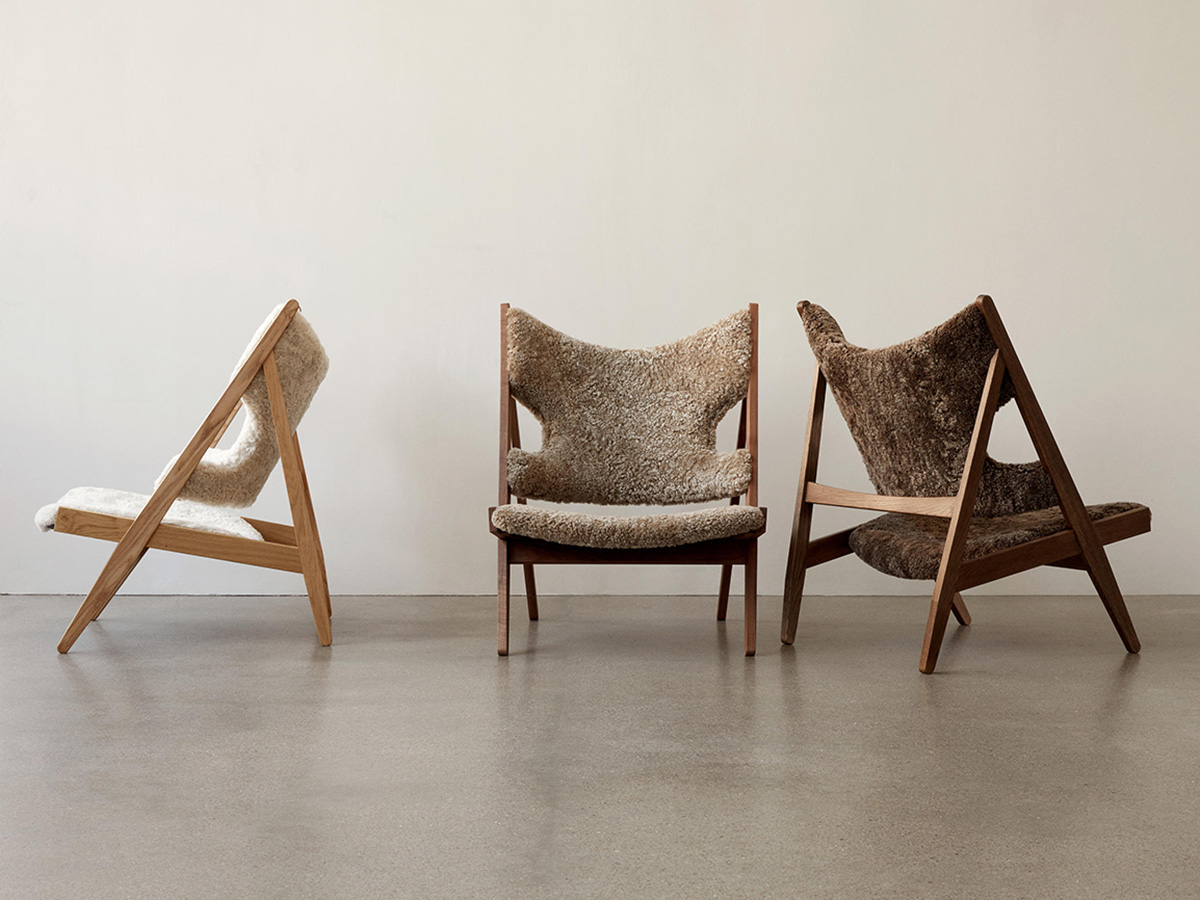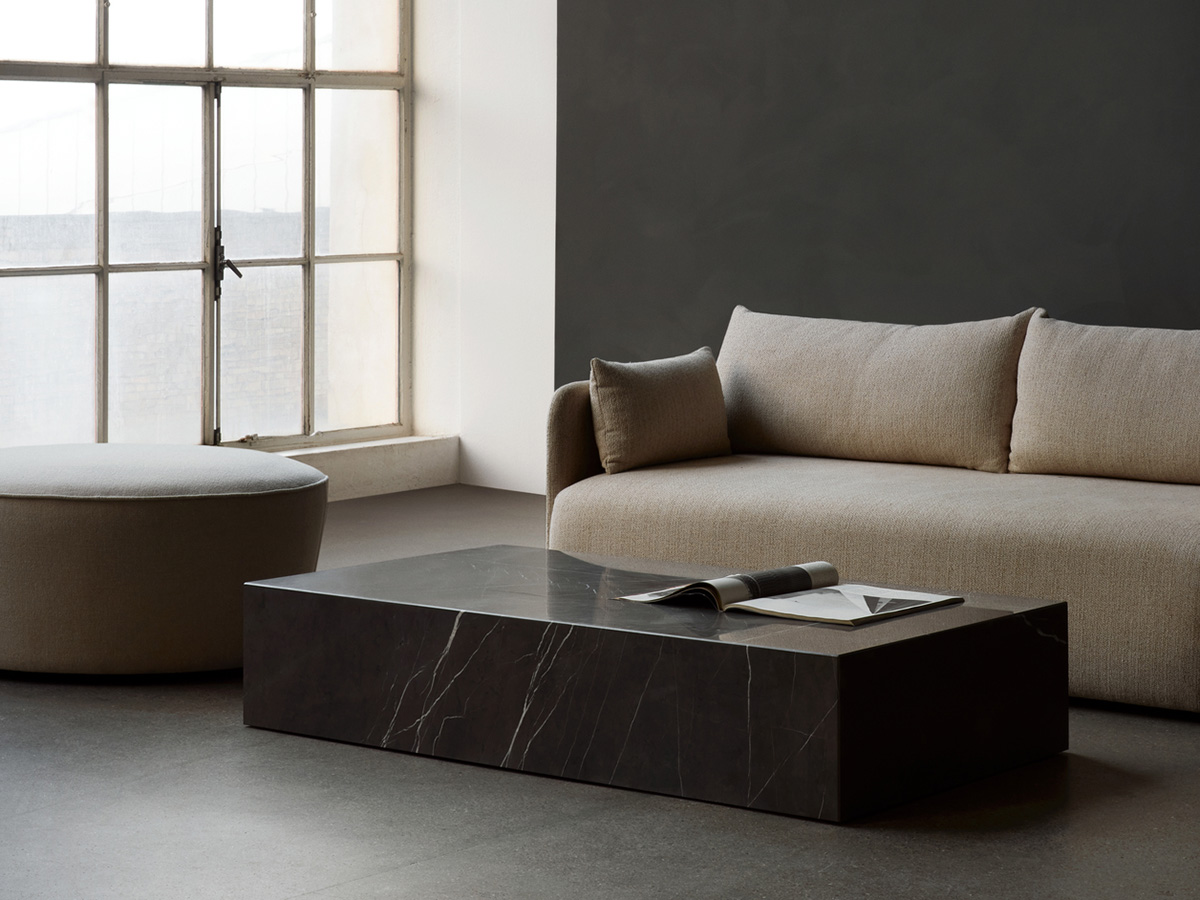The best Scandinavian design furniture brands
The great success of Scandinavian design in the world, the result of a history and a stratified aesthetic not without internal contradictions, can perhaps be summed up in a Danish word that has now become very popular: “hygge”. This very multifaceted term, often literally translated as “pleasure” or “well-being”, recalls the warm welcome of familiar and relaxing atmospheres, which bring with them a sense of comfort and security. It is the sensation you feel in a mountain chalet on a winter evening, surrounded by your loved ones around a fire in the fireplace while outside the windows a thick snow gives the landscape a cold embrace. A suspended and magical time in which every worry vanishes and you feel fully in your place, truly “at home” in the fullest sense.
These suggestions are grafted onto a rich cultural history that has meant that in Scandinavian countries design has become a social phenomenon of much broader scope than it had in other Western countries. Accustomed to spending the long cold months indoors, the people of Scandinavia have always given great importance to furnishings and interior spaces, developing very advanced reflections and design practices since the 19th century. The real contemporary history of Scandinavian design, however, begins in the 1920s and is intertwined with that of Modernism, of which Scandinavian designers gave a heterodox and very personal interpretation.
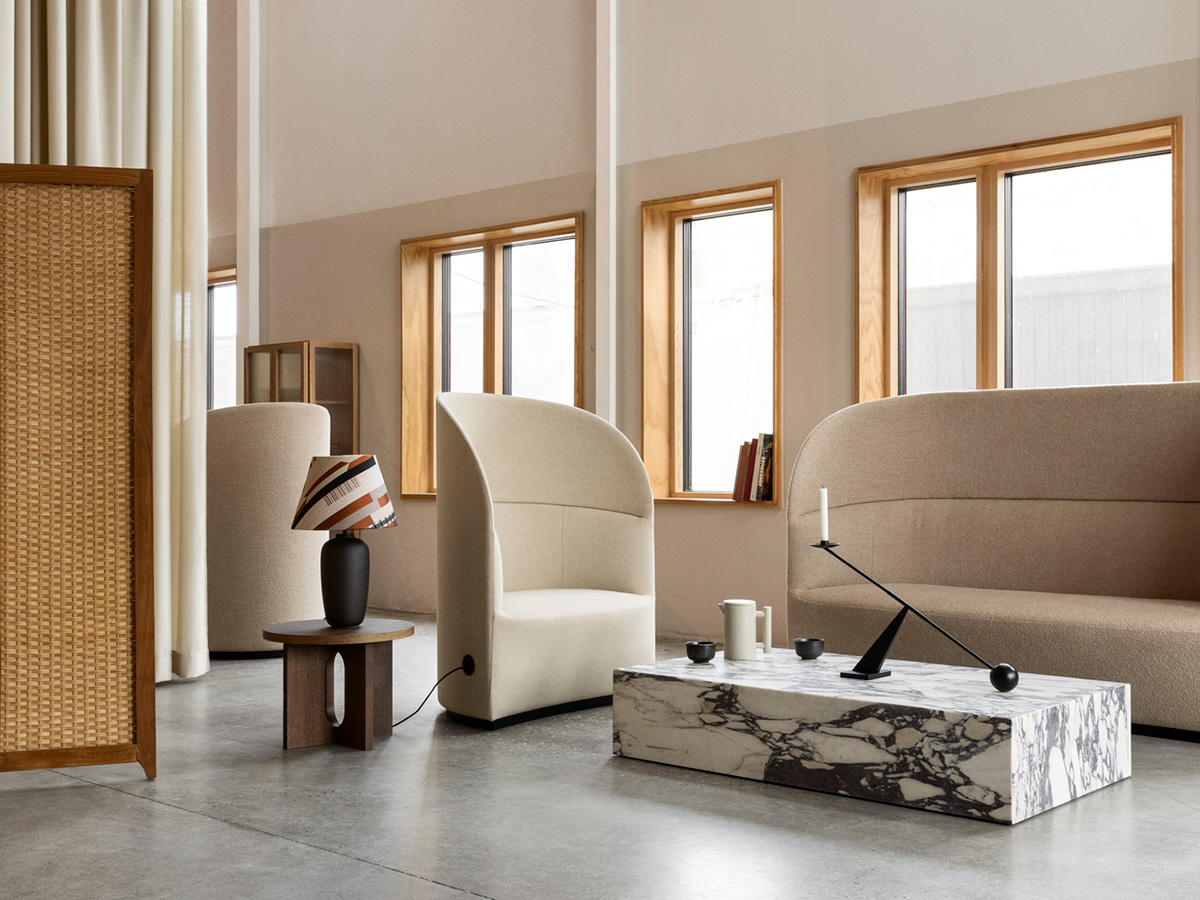
Where the great modernist designers – Le Corbusier in the lead – looked to the future and to newly conceived materials, the best Scandinavian designers were instead able to combine the tension towards mass production at democratic prices with an enhancement of highly developed local craftsmanship and the harmony of natural forms and materials, especially wood. Light shades, extensive use of creamy whites in bright environments, simple forms rich in references to tradition: these are some of the secrets of the Scandinavian design school that conquered the world in the post-war period starting with the great success of the exhibition “Design in Scandinavia” that toured the United States and Canada between 1954 and 1957.
Still in very good health, Scandinavian design has been able to continually innovate over the years without losing touch with its roots, taking advantage of the lessons of masters such as Alvar Aalto, Arne Jacobsen, Hans J. Wegner, Verner Panton and countless others to give life to a vast production, with hundreds of new brands that are born and prosper every year, within which it can often be difficult to orient oneself.
A first distinction that may be useful is that between the great “national schools”, which are very different even within a very cohesive region like Scandinavia. Denmark has specialized in the highest levels of production and in the most daring and experimental design. When we think of the great icons of Scandinavian design, its most timeless designers and the most successful inspirational brands, we are nine times out of ten thinking of Danish design. Sweden, on the other hand, has specialized in “accessible design”, giving life to the largest furniture group in the world with IKEA. Secluded but very lively, Finnish design is still very much influenced by its tutelary deity, the immortal Alvar Aalto, and can also count on a fruitful production of accessories and objects. Norwegian furniture design has had less success in the world, but can boast with Stokke a pinnacle of excellence in the niche of accessories for children.
At the level of individual brands, Scandinavian design can count on some of the most well-known brands in the world. Let’s now analyze the main ones one by one, focusing on their focal characteristics and the main differences between them.
Founded in Copenhagen way back in 1872 by the eponymous founder, Fritz Hansen is still one of the most well-known and appreciated Danish design brands in the world. It was among the first Danish cabinetmakers to embrace the path of industrialization and mass production and from the 1950s onwards it established itself as one of the leaders of the success of Scandinavian design even outside the national borders. This happened above all thanks to its collaboration with the architect and designer Arne Jacobsen, capable of giving life with Fritz Hansen to some of the timeless design icons that have established themselves as symbols of Scandinavian style in the world, from the imposing Egg armchair to the omnipresent Ant chair and the Swan armchair. Focused on armchairs and seats, Fritz Hansen’s production lends itself to use in both domestic environments and public spaces.
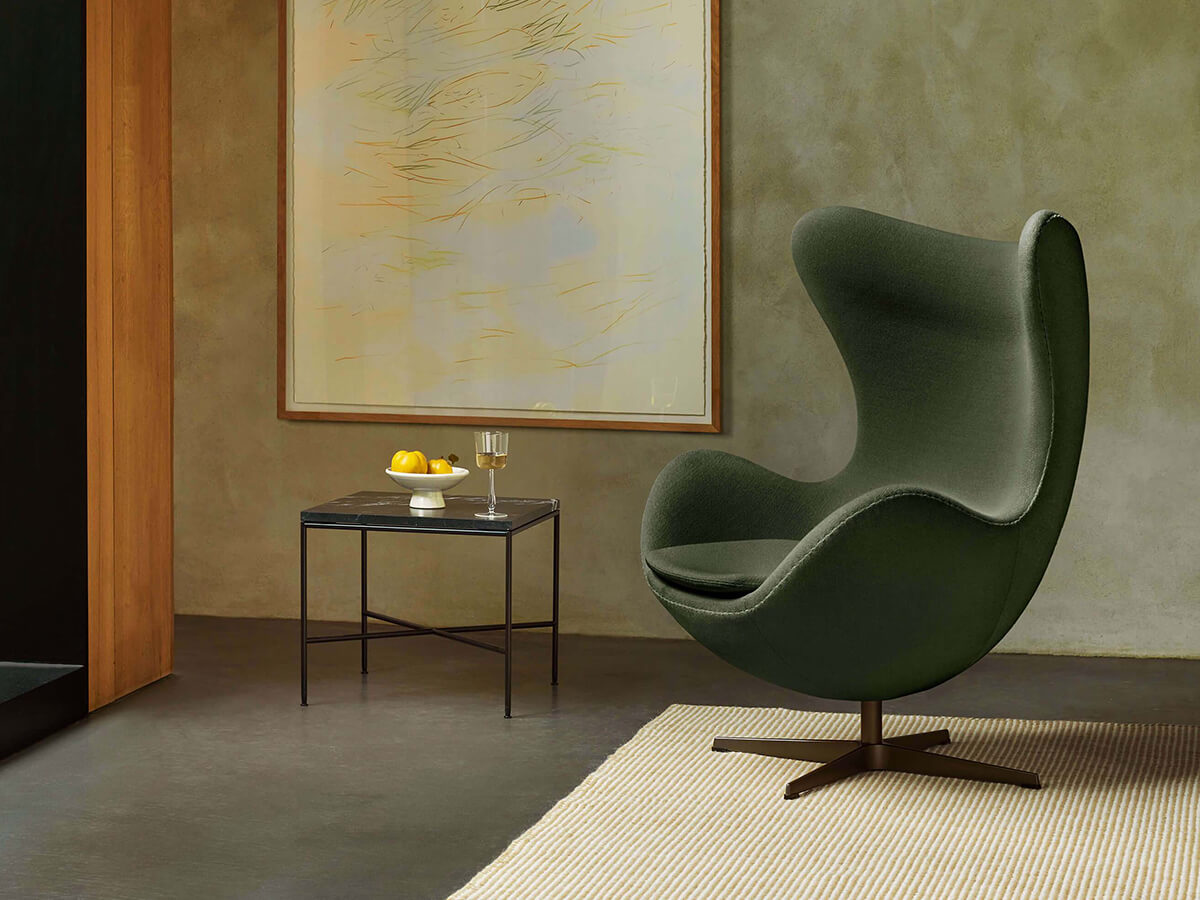
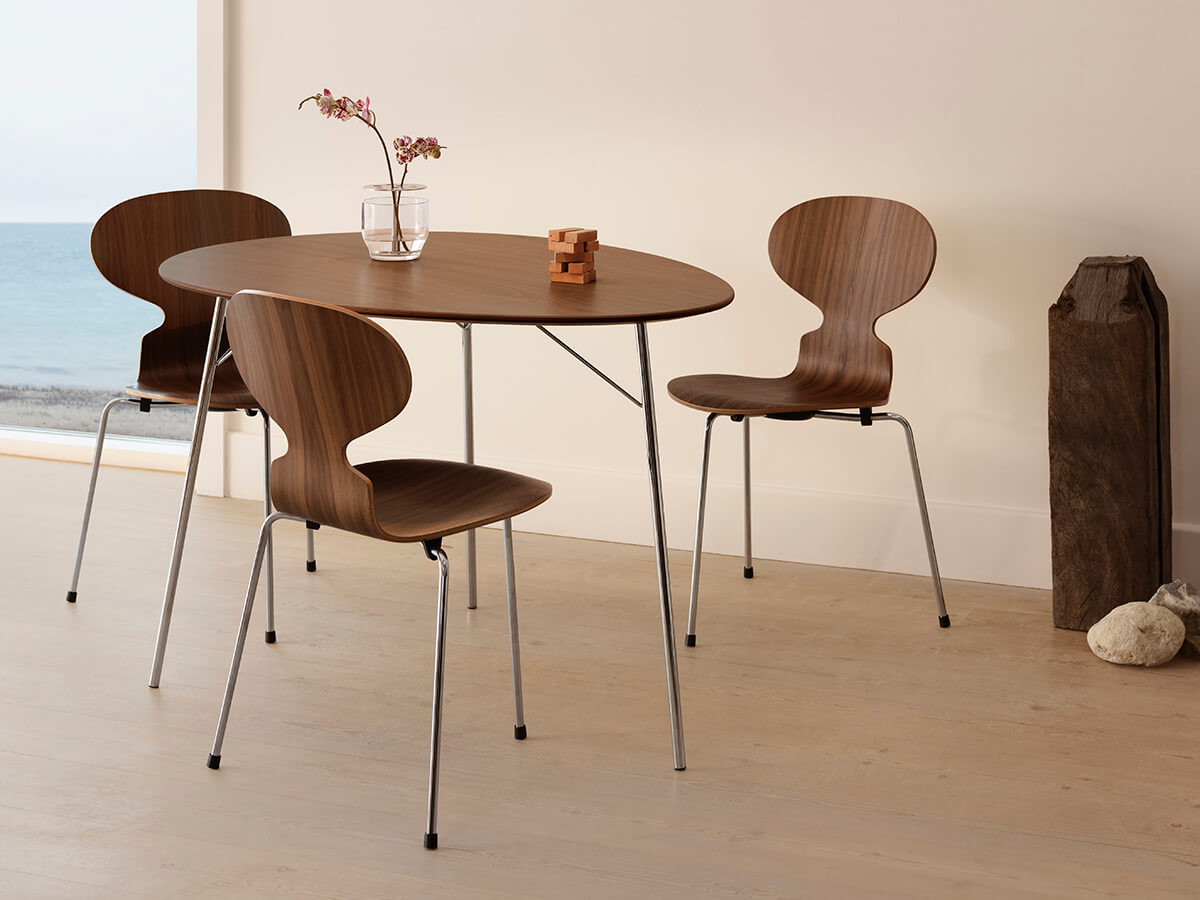
Carl Hansen & Søn, which has enjoyed ever-increasing success over the last twenty years, can actually boast a history spanning over a century, beginning in 1908 in the town of Gelsted on the island of Fyn, where the company is still based. Initially a small artisan cabinet-making shop, it owes much of its success to the collaboration that began in the 1950s with the man considered the great master of the Danish chair, the immortal Hans J. Wegner, who designed chairs for Carl Hansen such as the CH24 Wishbone Chair – considered by many architects to be the most beautiful chair in history – the “armchair with a smile”, the CH07 Shell Chair model. Still a family-owned company with a strong focus on natural materials such as wood, Carl Hansen & Søn’s catalogue features new proposals alongside several re-editions of icons from the past, with an eye also to relatively accessible product pricing (although within the high end of the market).
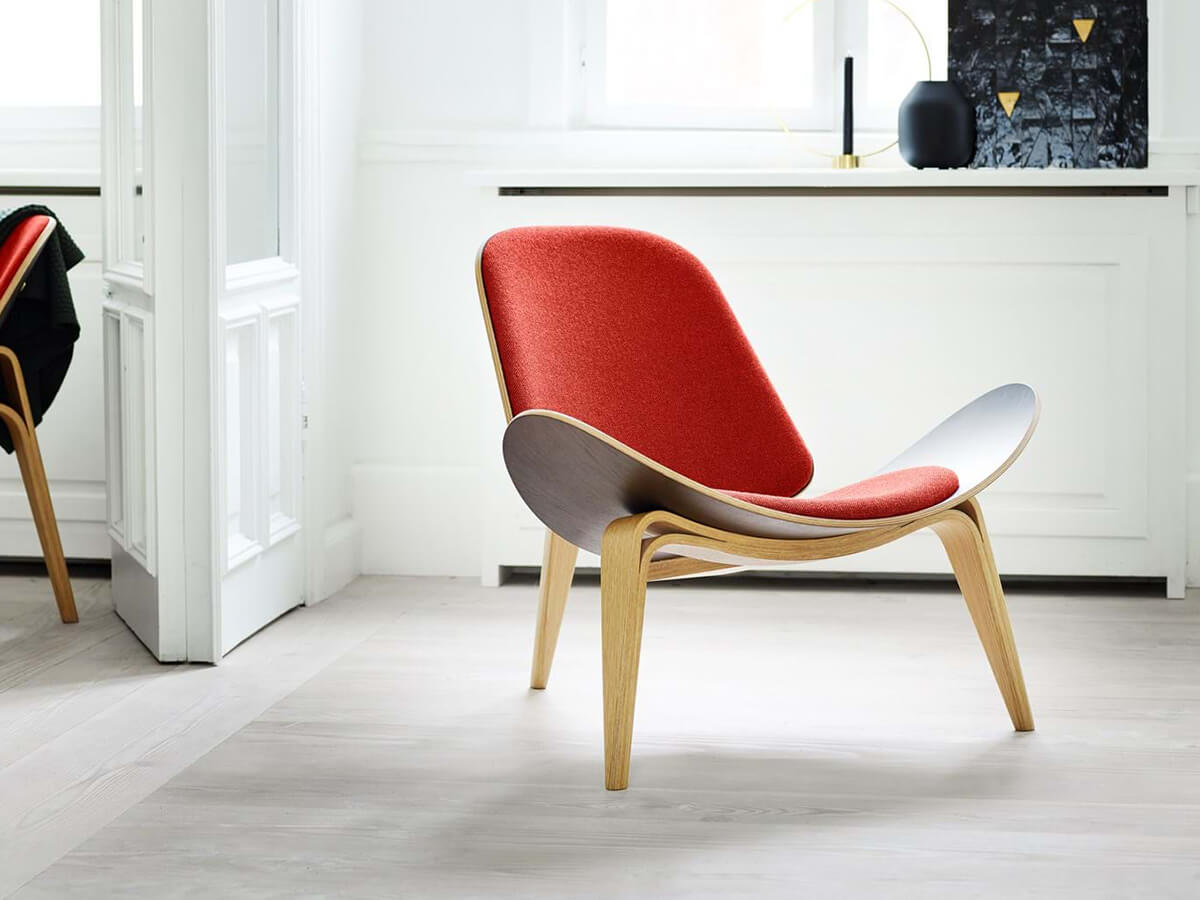
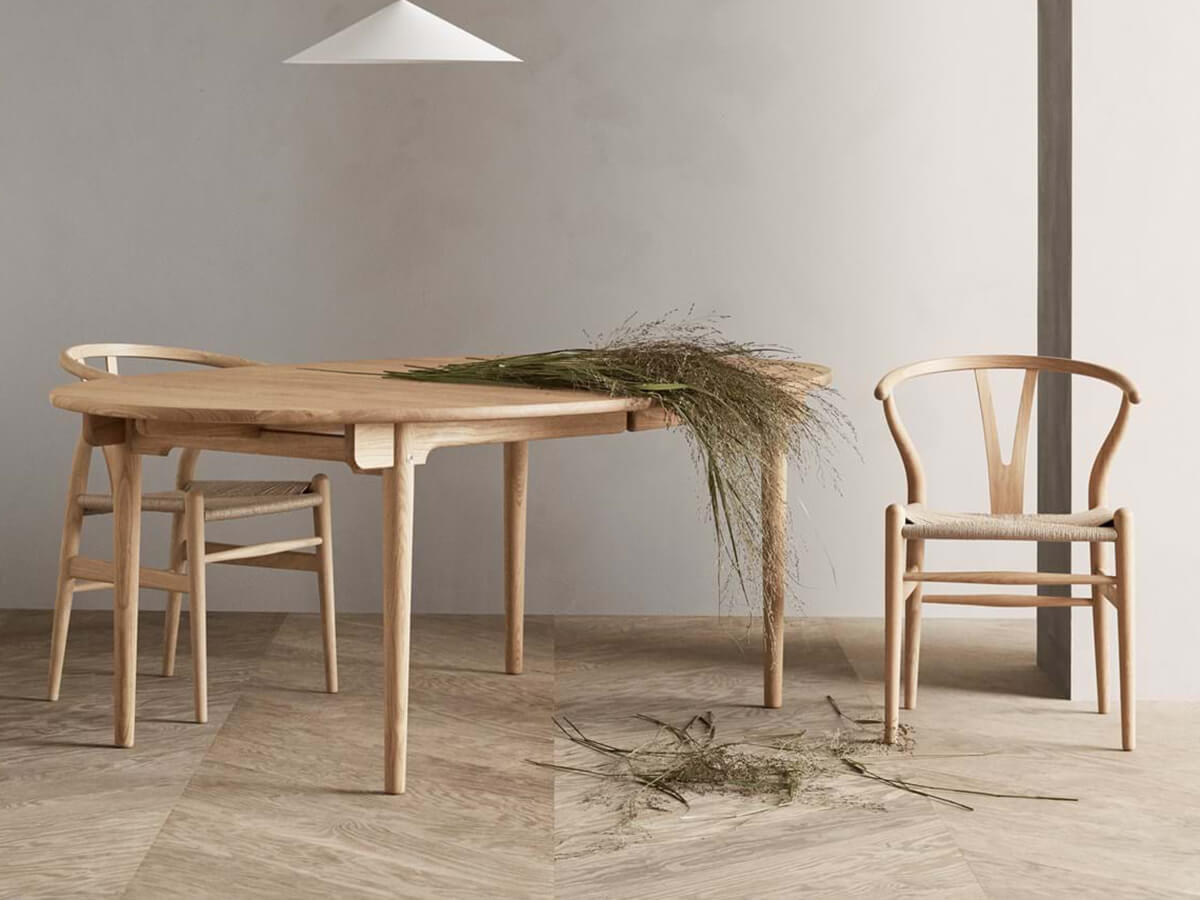
Undoubtedly the most famous of Scandinavian lighting companies, the company was founded in Copenhagen by Louis Poulsen in 1872 as a hardware store and began to deal with lighting in 1892. In the 1920s, the company was one of the protagonists of the mass electrification of Denmark, positioning itself as a main character on the market thanks to the lamps designed by Poul Henningsen, author of ingenious design solutions capable of preventing the glare effect of electric light, which was a very sensitive problem at the time. Born with a very specific practical function, the elaborate lampshades of lamps such as the PH5 model or the spectacular PH Artichoke are still very modern and unmistakable. Over the years, Louis Poulsen has maintained its role as an industrial giant and market leader, also collaborating with other highly important designers such as Arne Jacobsen and Verner Panton.
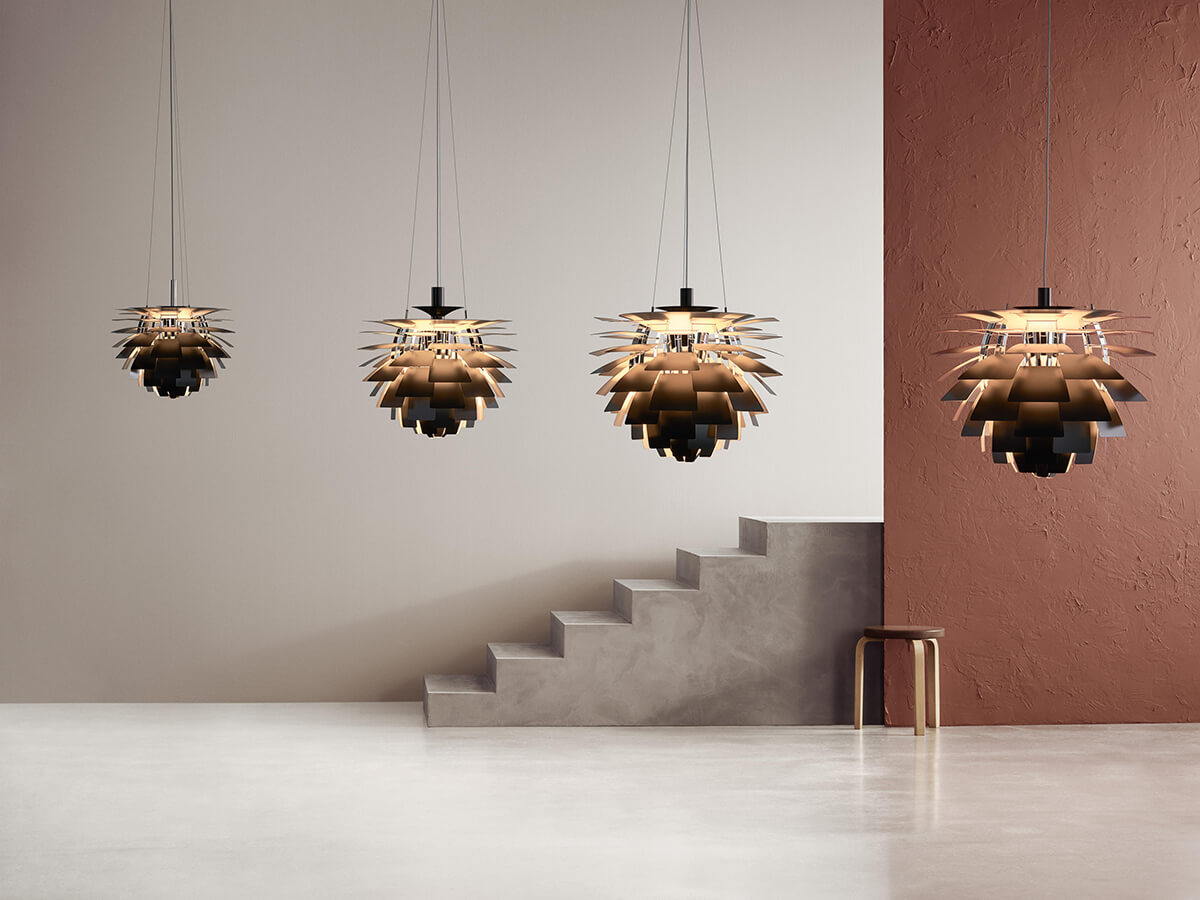
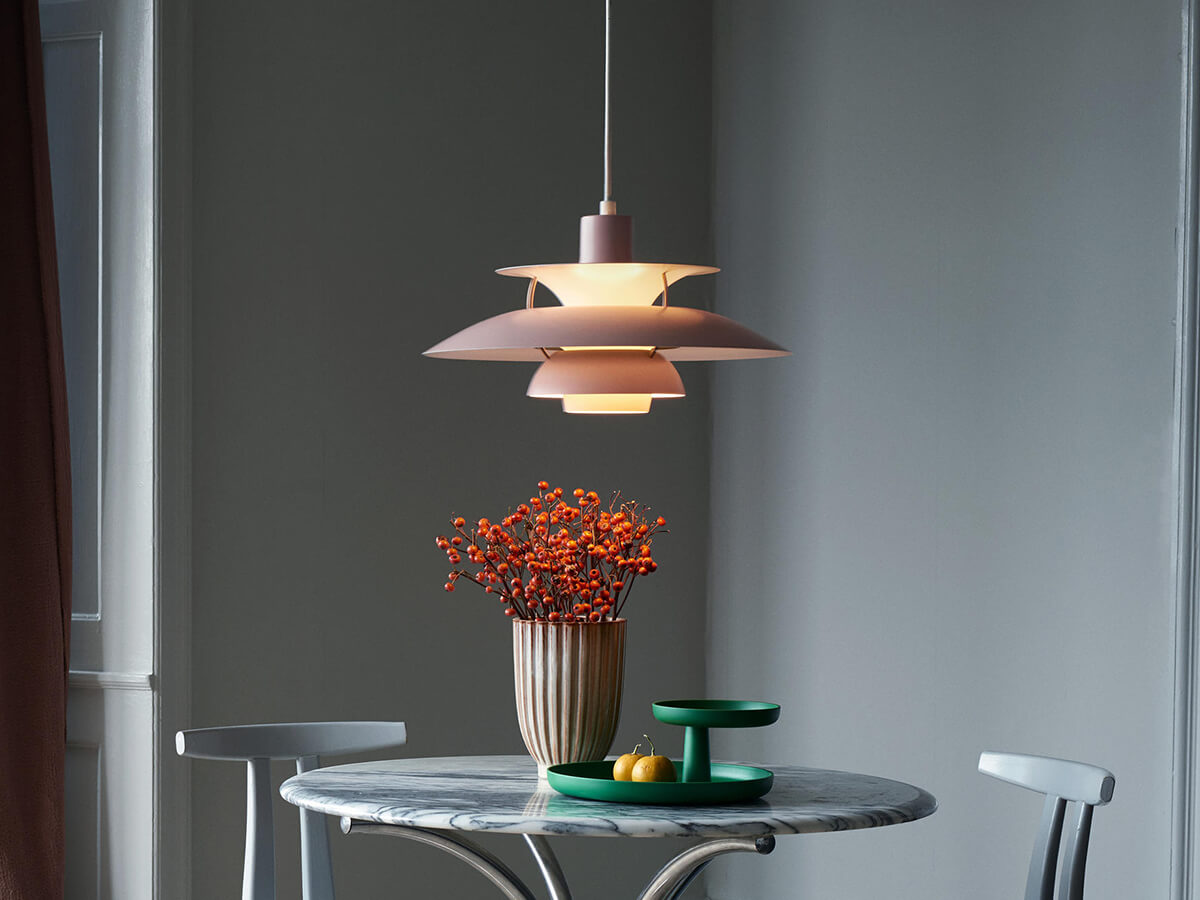
Artek rhymes with Alvar Aalto: the company was founded in 1935 by the great architect, founding father of Scandinavian Modernism, with the aim of bringing his creations in the field of curved furniture to mass production. It soon stood out for its experiments with curved wood, very modern for the time, which found application in now iconic products such as the 60 stool, the Paimio armchair with sinuous armrests or the fascinating 901 tea trolley, all designed by Aalto. In addition to the “hard core” constituted by Aalto’s production, over the years Artek has distinguished itself as the spearhead of Finnish design in the world, offering a solid production platform to designers such as Ilmari Tapiovaara and Eero Aarnio. Since 2013 it has been acquired by the Swiss giant Vitra, which has given the brand an even more international imprint with the introduction of many new contemporary designers.
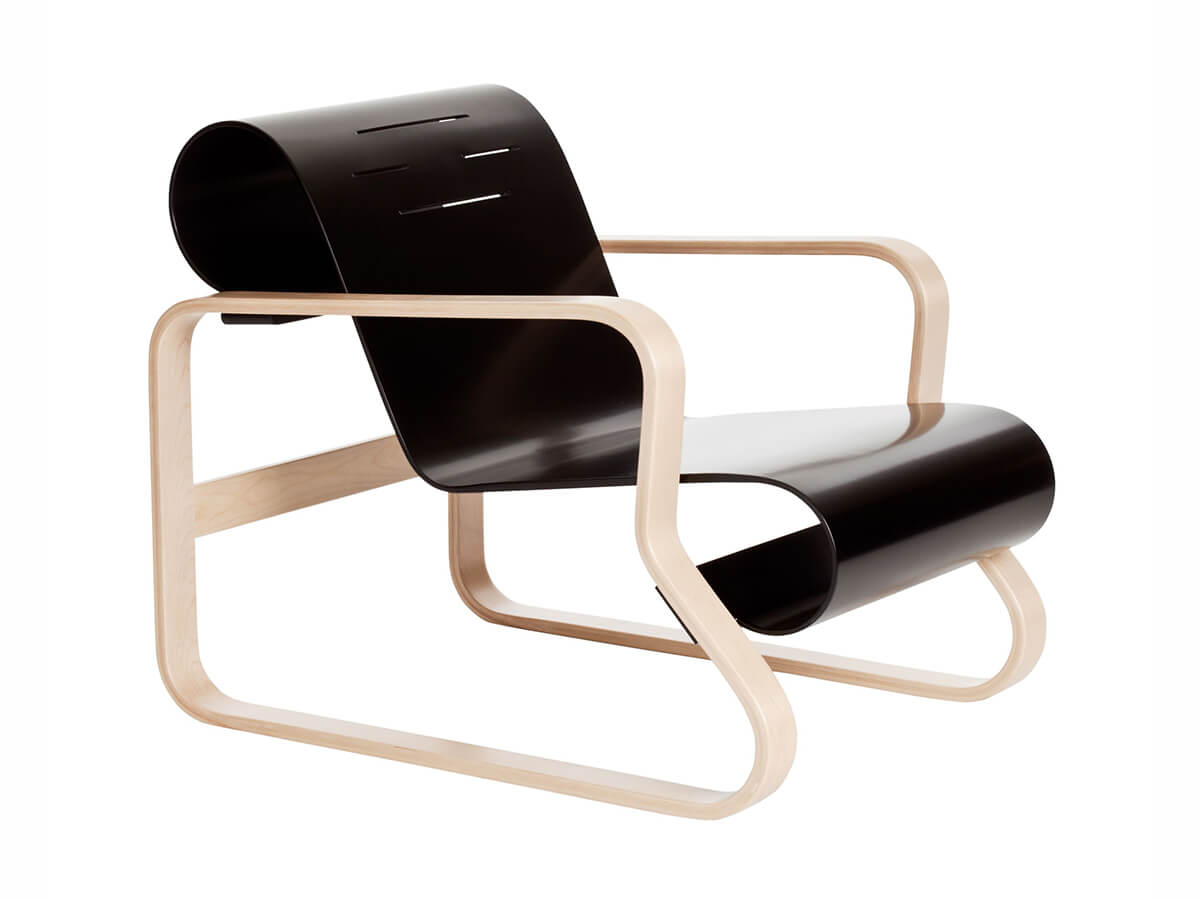
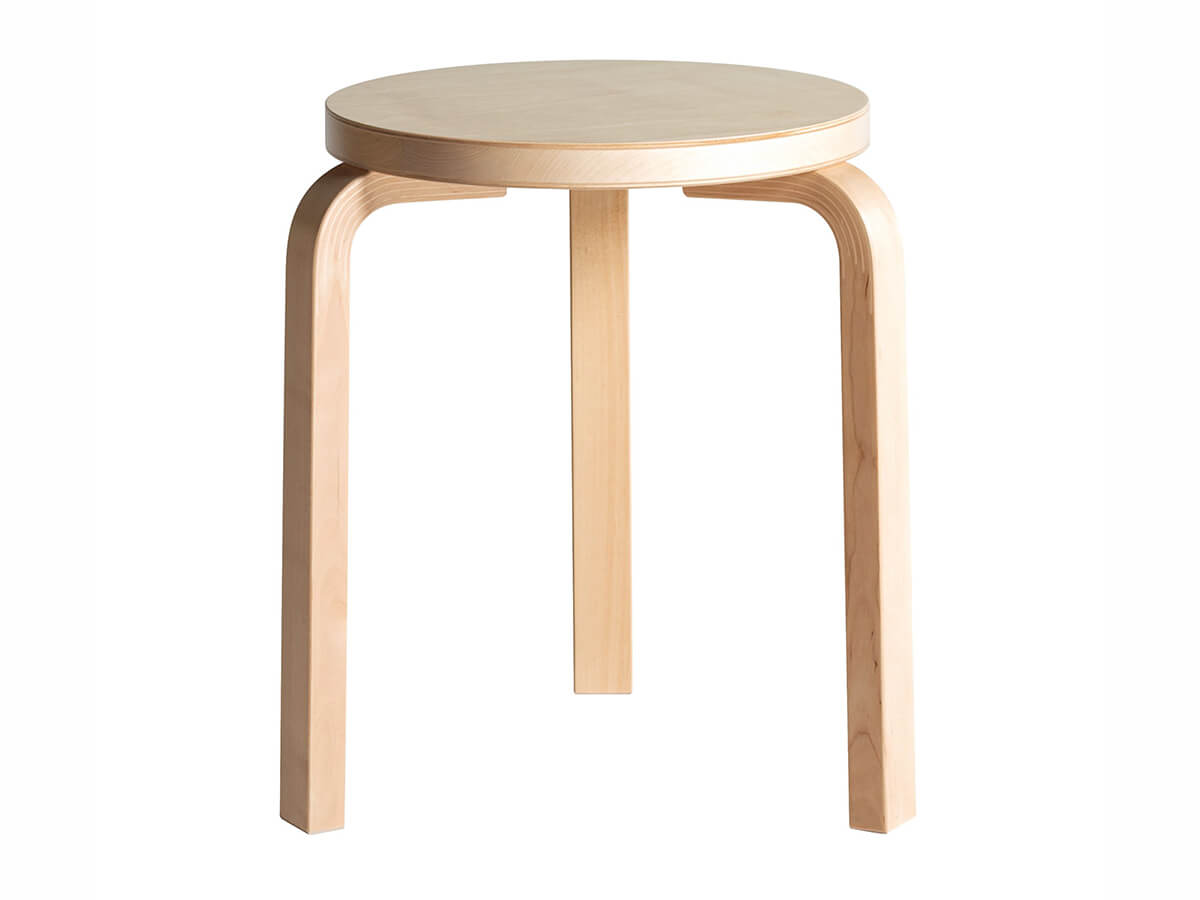
A major player in the “new wave” of Danish design, it partly distances itself from the classic imagery usually associated with the world of Scandinavian design: a protagonist of soft and refined atmospheres, Gubi is at the center of a rediscovery of vintage and Mid-Century design, with particular attention to the great French masters such as Pierre Paulin, whose Pacha armchair was the subject of a very successful re-edition that led it to become one of the true design icons of our time (despite the original design, long forgotten, dating back to 1975). Founded in 1967 in Copenhagen, Gubi has achieved great success especially since the 2010s and sees both the lighting sector and the furniture sector – especially seats and accessories – at the center of its production. In addition to inspired re-editions, Gubi is also very successful with new proposals, helping to launch the career of a design duo that is perhaps the leading name in contemporary Danish design: GamFratesi, creator of the successful Beetle chair.
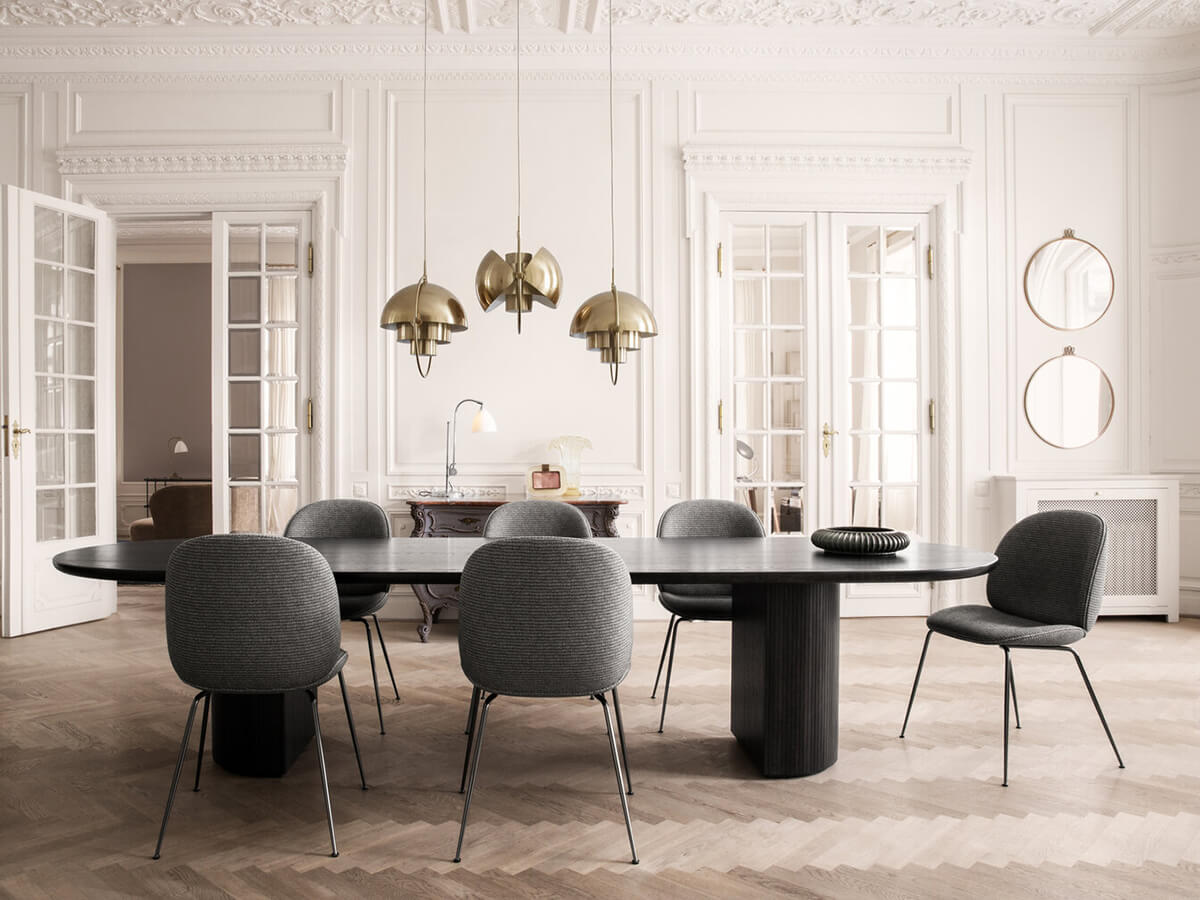
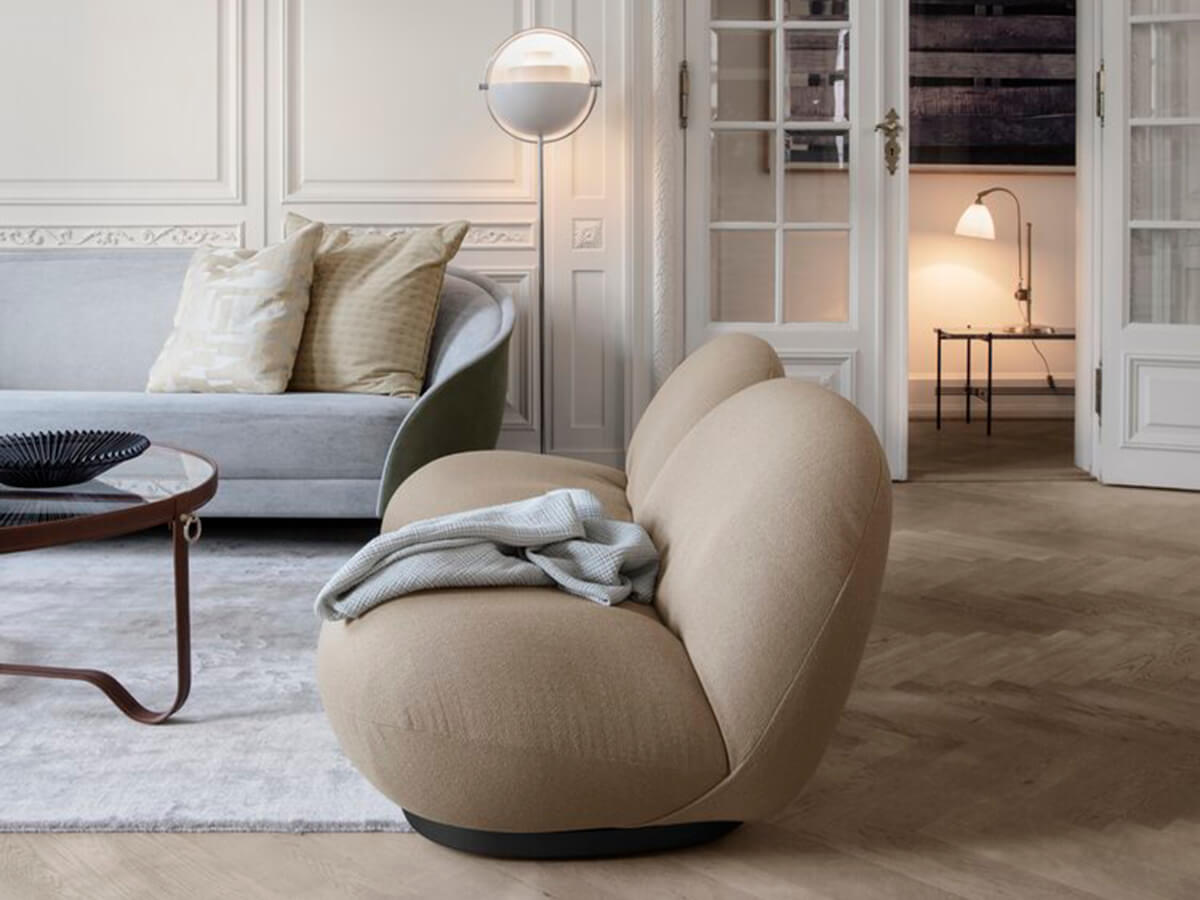
Finland is the protagonist of a glassmaking tradition of the highest level, whose history has today flowed almost entirely into the Iittala glassworks, which over the years has acquired and absorbed all its great rivals (including Karhula, Nuutajärvi and Riihimäki). The Finns are masters at working glass into sinuous and organic shapes, strongly inspired by nature, so as to make it seem almost like a living material with its own dynamism. In this field too, the great Alvar Aalto was a pioneer, author of a beautiful series of vases with shapes inspired by those of a lake, which have become the true symbol of Finnish design. Another important master who has measured himself with glass is Tapio Wirkkala, with an even more markedly naturalistic inspiration, who in his Ultima Thule series performs a real “sleight of hand” by giving glass the appearance of ice, while with the marvelous Kantarelli vase he manages to model the material into the wonderful shape of a flower.


Founded in 1911 in the coastal town of the same name in Southern Denmark, Fredericia has accompanied the growth and success of Danish design throughout the world through its many trends and developments. Its collaboration with Børge Mogensen, one of the most famous names in Danish design at the time, who created traditional but elegant seats such as the iconic Spanish Chair, dates back to the 1950s. The collaboration with Nanna Ditzel, the “grand dame” of Danish design, was then fruitful in the 1980s and 1990s, helping to bring its production up to date. Today Fredericia is a brand with a catalogue full of classics (even more so since 2020, with the acquisition of Erik Jørgensen Møbelfabrik, which brought with it timeless pieces such as the Ox Chair by Hans J. Wegner or the Corona Chair by Poul M. Volther) but with an innovative and glamorous image, enriched by the collaboration with trend-setting studios such as the award-winning Space Copenhagen (authors of the design of the famous Noma restaurant): a real must for true enthusiasts of Danish design.
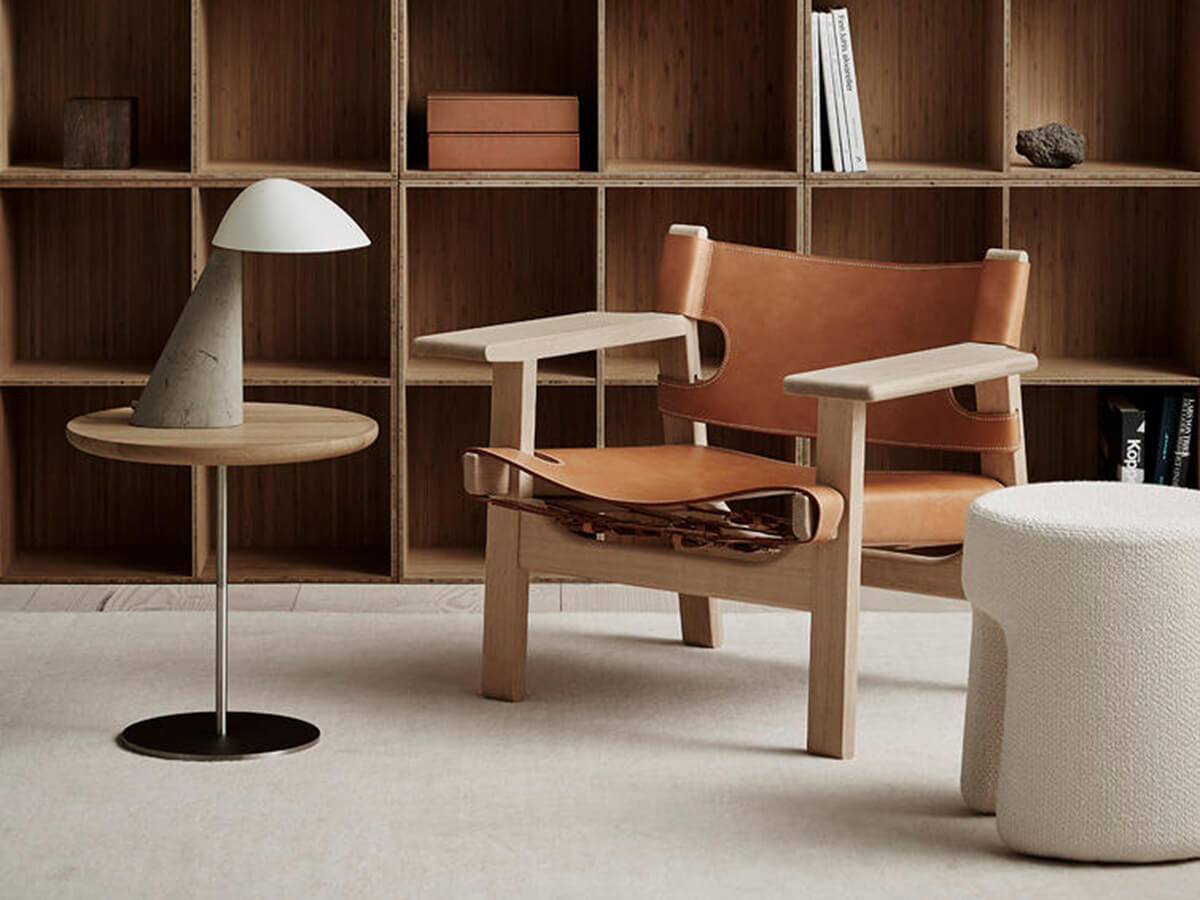
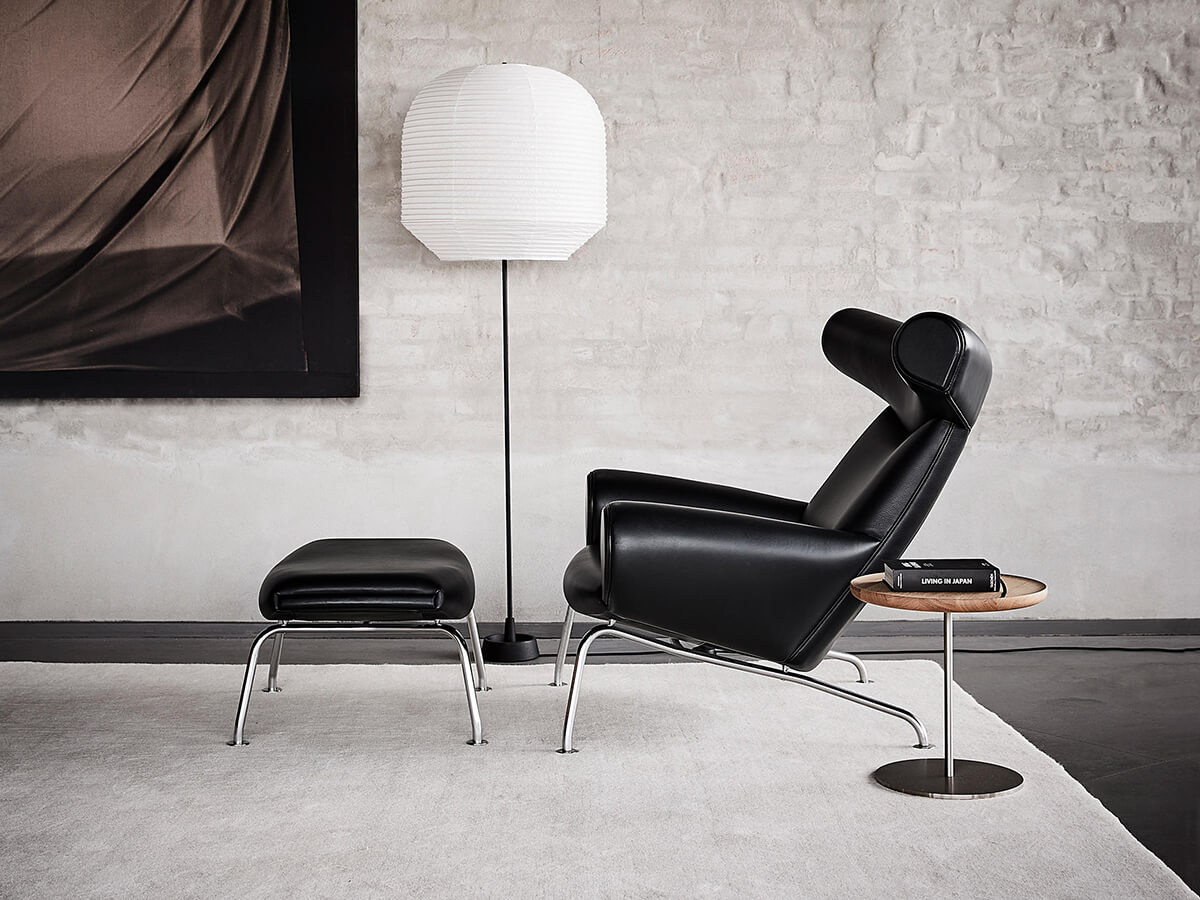
Considered the enfant terrible of Scandinavian design, starting especially in the 1960s Verner Panton helped bring into the future the style of Danish design that was becoming a little too mannered and sclerotic, opening it up to the use of new materials such as plastics and to the vivacity of bright pop colors that broke sharply with the measured Scandinavian tradition. While his most famous and iconic product – the timeless Panton Chair – is the firm preserve of a Swiss brand like Vitra, among the first to believe that the mass production of such a visionary piece for the time was possible, many of his creations are now offered by the Danish brand Verpan, entirely dedicated to Panton’s work, which works side by side with the designer’s heirs to re-edit philologically accurate and still perfectly current versions of many of his masterpieces such as the VP Globe and Fun lamps. Also interesting is the selection of furnishings, often of a remarkably eclectic taste, among which the elegance of the 430 chair stands out.
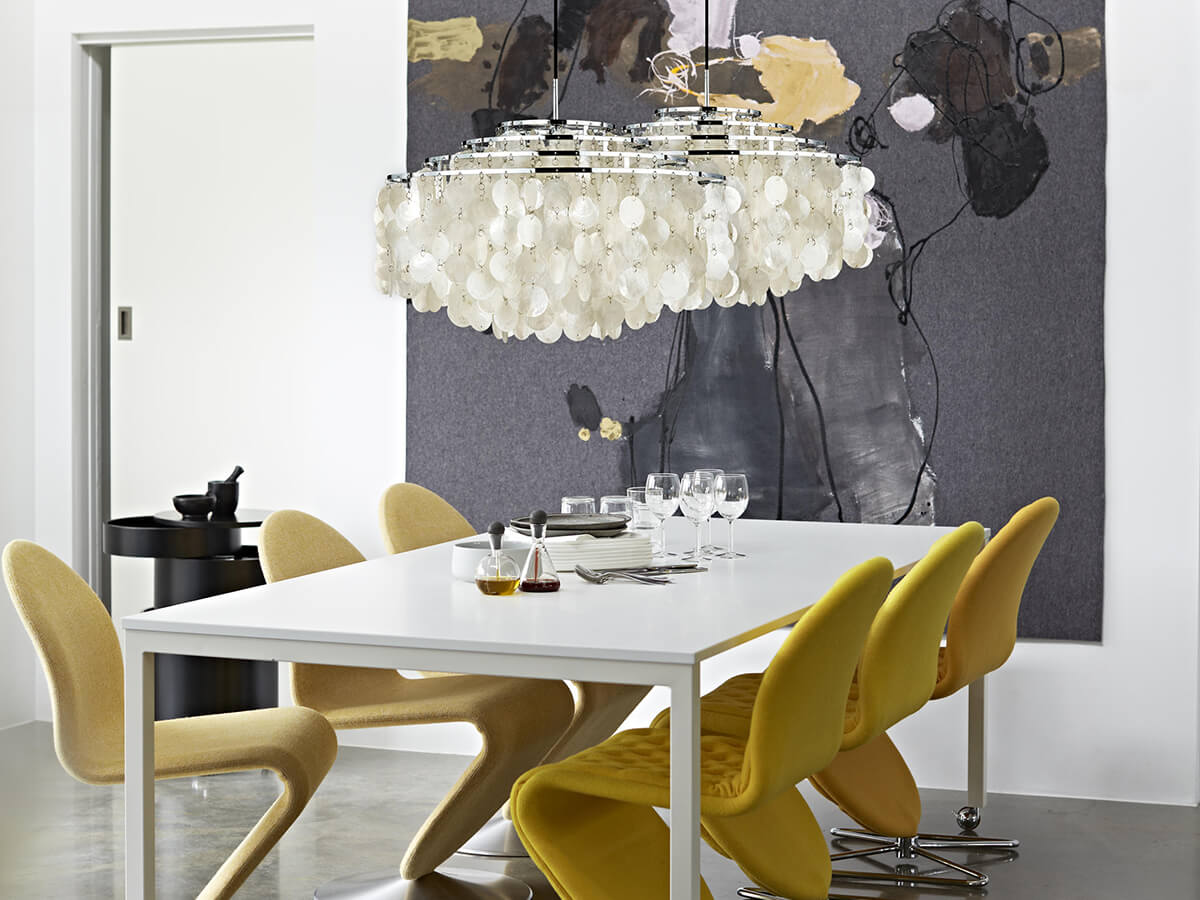
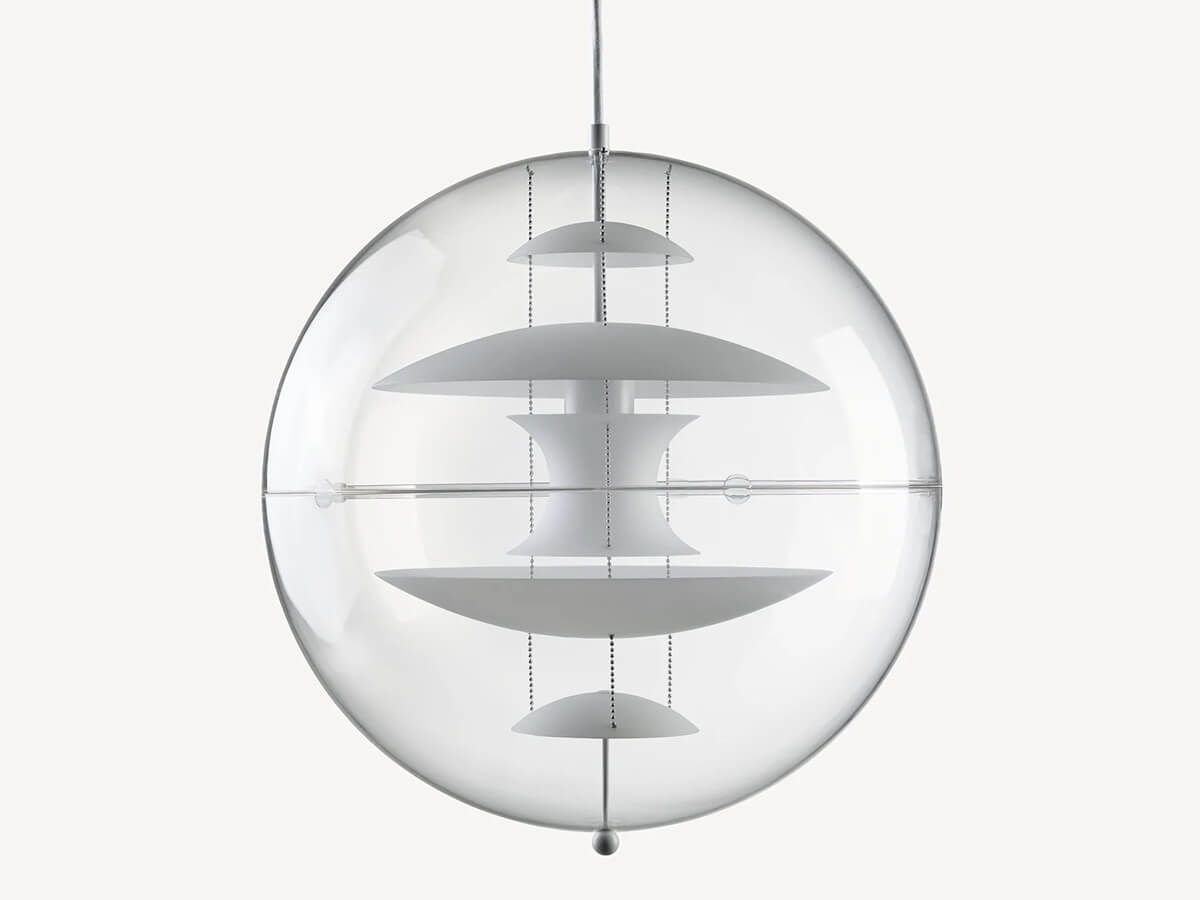
It is the latest addition to the internationally successful Danish design brands, &tradition was founded in Copenhagen in 2010. Having experienced rapid growth in recent years, it is among the companies listed here that offers the largest selection of furniture and accessories at the most accessible price, without sacrificing the quality of great design. The name itself declares its vocation for re-editions of classics from the past, such as the iconic Flowerpot lamp by Verner Panton or the welcoming Little Petra armchair by Viggo Boesen. However, &tradition’s gaze is clearly turned to the future: a skilled implementer of the most modern marketing strategies, with a fresh and glossy image, the company also has numerous successful contemporary collections that are the result of collaborations with prestigious designers on the contemporary scene, such as the Spanish Jaime Hayon and the Italian Luca Nichetto. In addition to furniture, &tradition also deals with lighting and objects with great success.
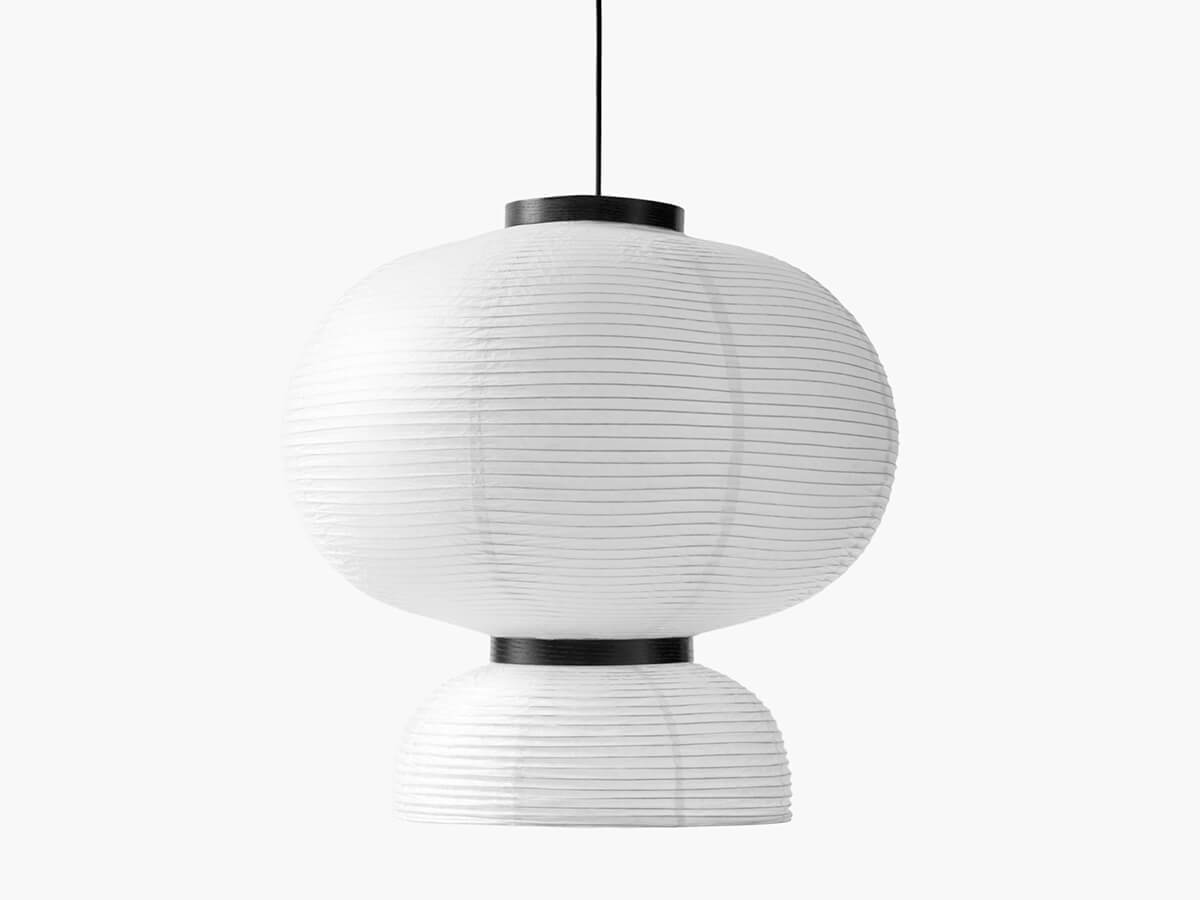
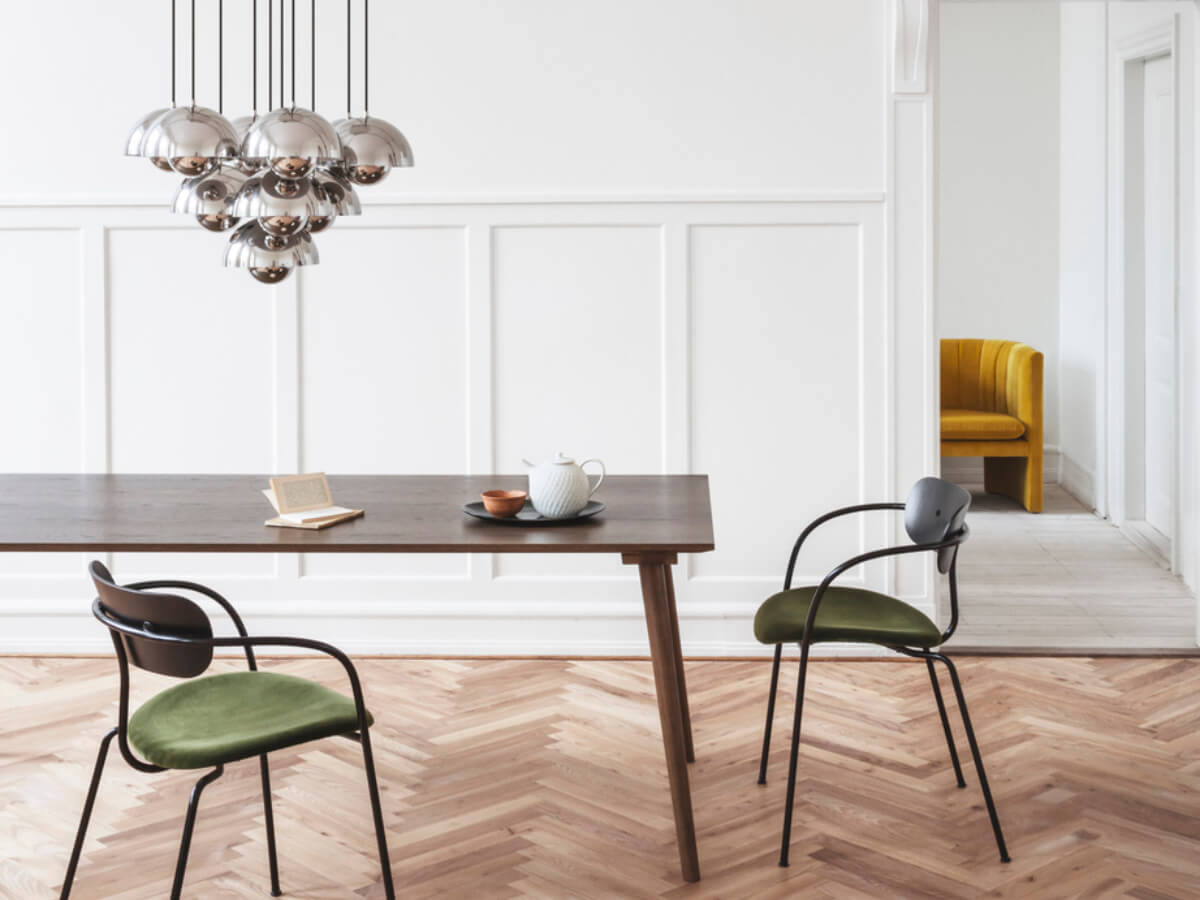
Finn Juhl was one of the great cabinetmakers who brought prestige to the tradition of Danish design in the early 1950s. He was perhaps the first to achieve great success in the United States, where his armchairs are still highly appreciated. He also found great success in the vintage market with the Chieftain Chair, a masterpiece of fine cabinetmaking with sinuous or organic shapes, or the welcoming Pelican Chair. Having fallen somewhat into oblivion after his death, Finn Juhl has recently enjoyed a “second youth” following the agreement reached in 2001 between his heirs and the prestigious Onecollection cabinetmaker in Ringkøbing, located on the west coast of Jutland, to bring all the master’s best creations back into exclusive production under the “House of Finn Juhl” brand.
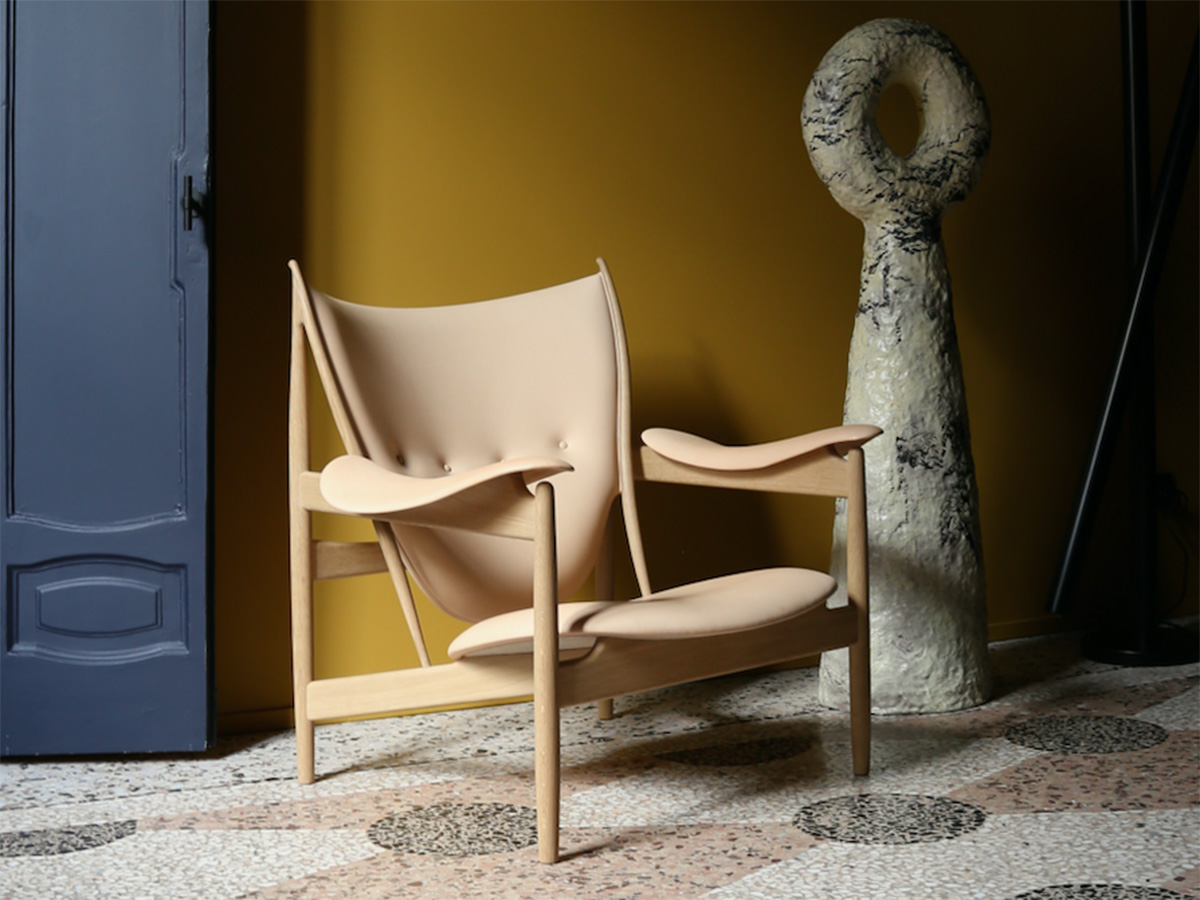
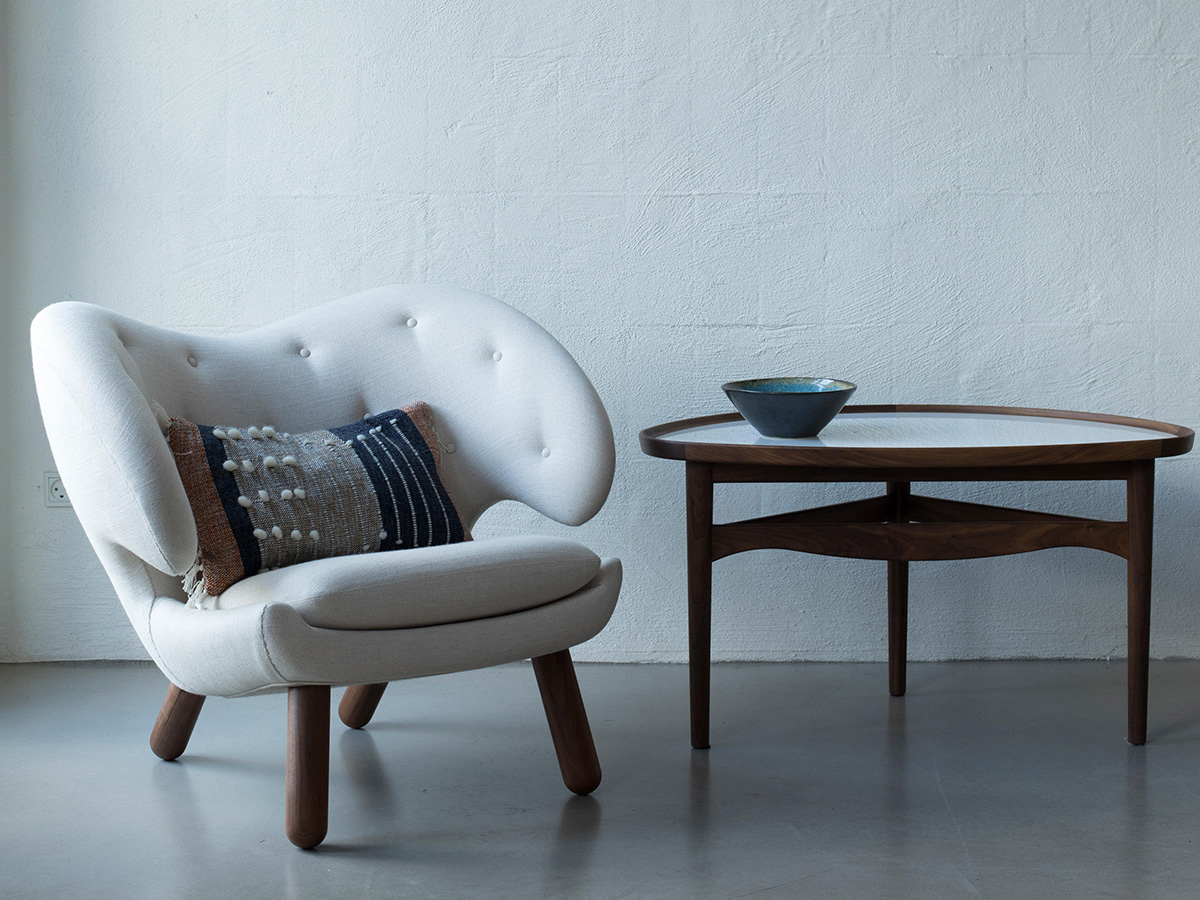
Among the brands on this list, it is the smallest and most niche company – as well as probably the one with the most expensive products in its catalogue. A small, family-run artisan cabinet-making shop located in Allerød, a town not far from Copenhagen, PP Møbler boasts a very close collaboration with the great Hans J. Wegner, who created some of his most famous works in their workshops, such as the Papa Bear armchair, with its unmistakably vintage look, capable of reaching dizzying prices on the modern antiques market, or the fascinating Circle Chair, with its rope backrest. The true symbol of PP Møbler production, however, is the characteristic Flag Halyard lounge chair, one of the few Wegner products to have steel rather than wood as the main material.
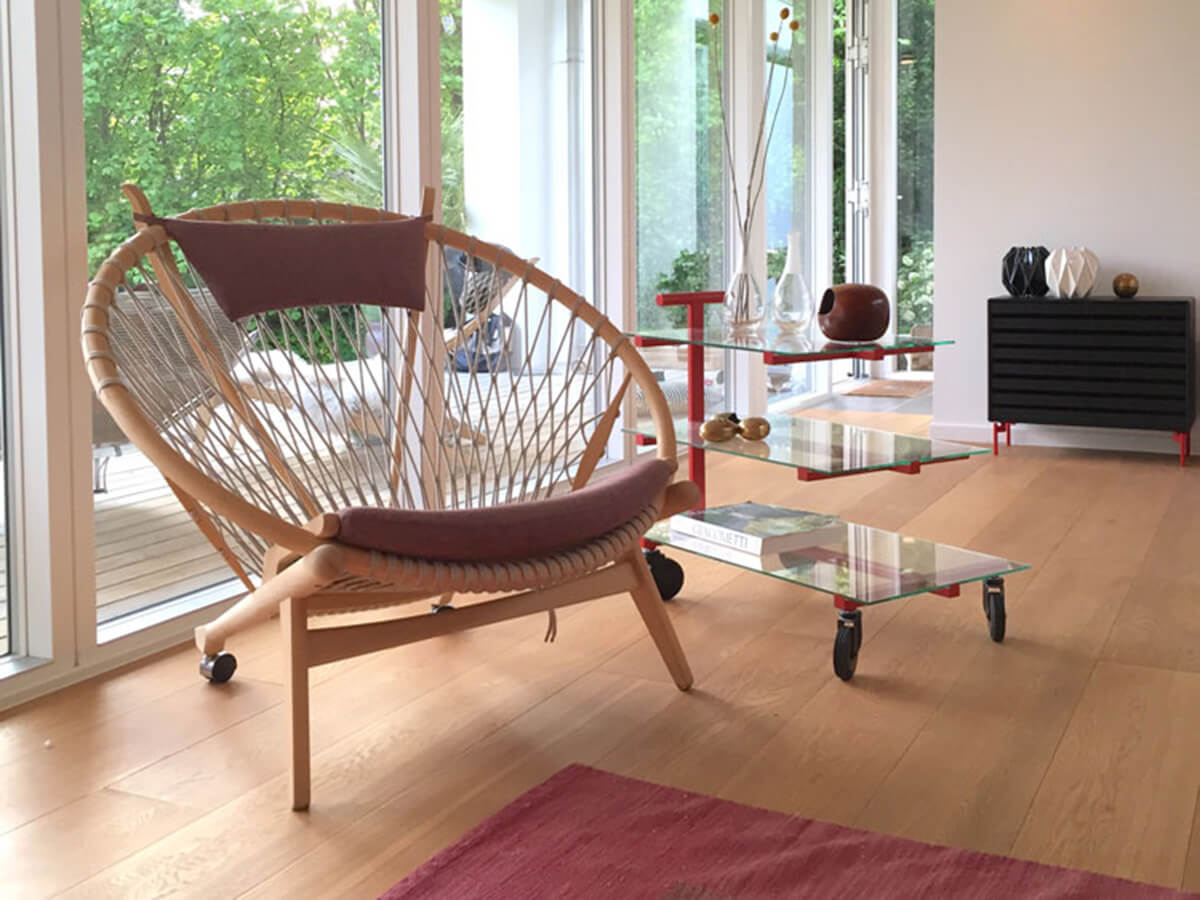
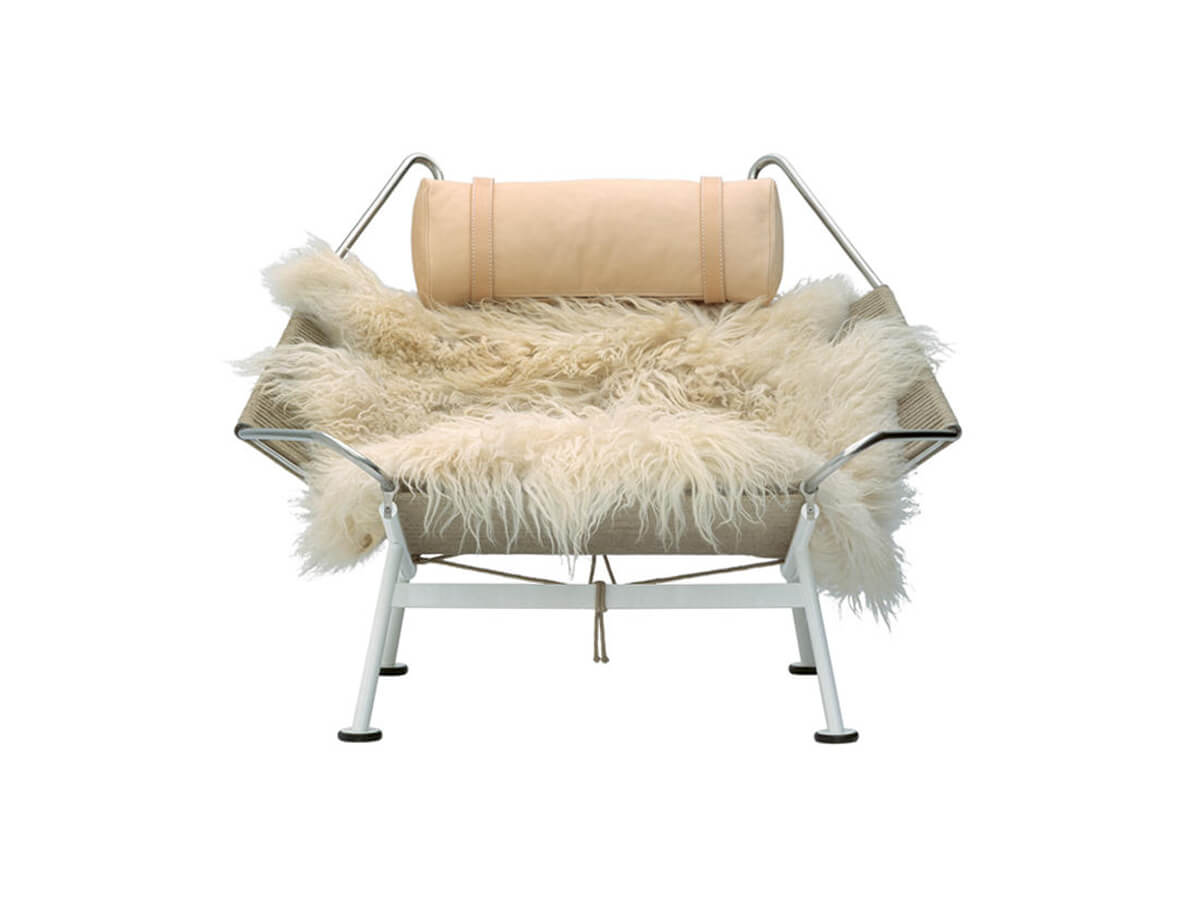
Seductive and glamorous, the Audo Copenhagen brand is one of the best examples of how in recent years the typical Scandinavian style has been able to renew itself and adapt to fashions without distorting itself. The brand is very recent: it was born in 2023 from the merger of two brands that have been protagonists of growing success in recent years such as Menu, specialized in objects and accessories, and By Lassen, focused on the re-editions of furniture designed by the architect Mogens Lassen. Captivating designs and a recognizable and expressive photographic style make Audo Copenhagen the perfect brand for the social media era, where it has found ever-increasing success thanks also to its focus on affordable productions concentrated above all on accessories, lamps and complements. Of particular value is the collaboration with the Norm Architects studio, interpreter of an enveloping minimalism that can rightly be considered the most recent and most successful development in the centuries-old history of Scandinavian design.
